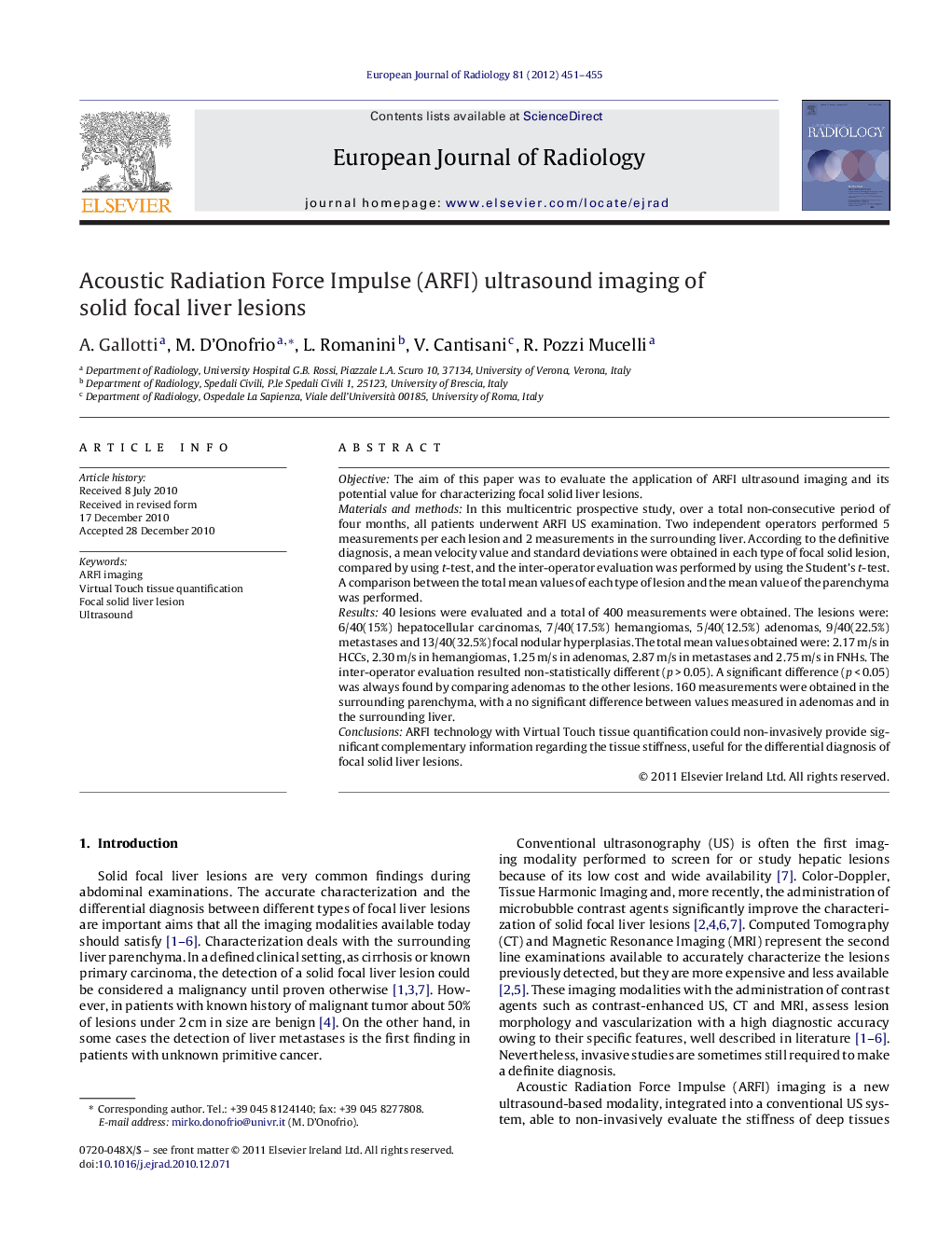| Article ID | Journal | Published Year | Pages | File Type |
|---|---|---|---|---|
| 4226433 | European Journal of Radiology | 2012 | 5 Pages |
ObjectiveThe aim of this paper was to evaluate the application of ARFI ultrasound imaging and its potential value for characterizing focal solid liver lesions.Materials and methodsIn this multicentric prospective study, over a total non-consecutive period of four months, all patients underwent ARFI US examination. Two independent operators performed 5 measurements per each lesion and 2 measurements in the surrounding liver. According to the definitive diagnosis, a mean velocity value and standard deviations were obtained in each type of focal solid lesion, compared by using t-test, and the inter-operator evaluation was performed by using the Student's t-test. A comparison between the total mean values of each type of lesion and the mean value of the parenchyma was performed.Results40 lesions were evaluated and a total of 400 measurements were obtained. The lesions were: 6/40(15%) hepatocellular carcinomas, 7/40(17.5%) hemangiomas, 5/40(12.5%) adenomas, 9/40(22.5%) metastases and 13/40(32.5%) focal nodular hyperplasias. The total mean values obtained were: 2.17 m/s in HCCs, 2.30 m/s in hemangiomas, 1.25 m/s in adenomas, 2.87 m/s in metastases and 2.75 m/s in FNHs. The inter-operator evaluation resulted non-statistically different (p > 0.05). A significant difference (p < 0.05) was always found by comparing adenomas to the other lesions. 160 measurements were obtained in the surrounding parenchyma, with a no significant difference between values measured in adenomas and in the surrounding liver.ConclusionsARFI technology with Virtual Touch tissue quantification could non-invasively provide significant complementary information regarding the tissue stiffness, useful for the differential diagnosis of focal solid liver lesions.
